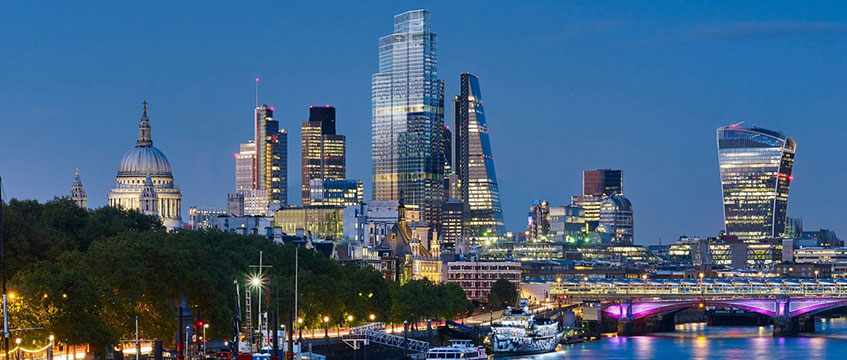Boosting the City through better street design and management
To help improve air quality, an Ultra Low Emission Zone comes into action in central London from 8 April in the same area as the Congestion Charge.
This zone will require most vehicles, including goods vehicles, driving into the City to meet strict emissions criteria. It will operate 24 hours a day, seven days a week, and from October 2021 its boundaries will expand to the north and south circular roads.
Congestion has pushed the average car speed driving in central London to just 7.4 mph, according to Transport for London, and resulted in some of the worst air pollution in the world. The ULEZ aims to tackle this. Yet, the arrival of zero-emission vehicles on the streets is not the only change under way in the Square Mile.
To help improve air quality, an Ultra Low Emission Zone comes into action in central London from 8 April in the same area as the Congestion Charge.
[caption id="attachment_974943" align="alignright" width="200"] Philip Pearce, Savills[/caption]
This zone will require most vehicles, including goods vehicles, driving into the City to meet strict emissions criteria. It will operate 24 hours a day, seven days a week, and from October 2021 its boundaries will expand to the north and south circular roads.
Congestion has pushed the average car speed driving in central London to just 7.4 mph, according to Transport for London, and resulted in some of the worst air pollution in the world. The ULEZ aims to tackle this. Yet, the arrival of zero-emission vehicles on the streets is not the only change under way in the Square Mile.
A growing consciousness of the number of goods vehicles on the streets of the City is already clear. An increase in the proportion of light goods vehicles in central London in recent years has partly been driven by the increase in personal deliveries to workplaces from online retailers, and businesses are being encouraged to consider prohibiting staff from receiving personal deliveries at the office.
Planning permission for 22 Bishopsgate, EC2 – the tallest building in the City – was only granted on the grounds of an off-site goods delivery depot, and future office developments need to consider how deliveries can be sustainably carried out.
Pleasant environment
It is anticipated that employment in the Square Mile will increase by more than 620,000 people by 2044, and efforts to reduce traffic and make the streets more pleasant to walk around will support this growth.
Developers are constructing and refurbishing buildings around the City to offer businesses the very best offices in which to house their global headquarters – developments that have successfully attracted the likes of Bloomberg, Deliveroo and WeWork in recent years as the City gradually sheds its reputation as a stomping ground for financial institutions.
As an ever-broader tenant mix looks to the City, it’s important that high-quality buildings and global HQ offices are accessed from a similarly high quality of street.
Furthermore, the City is becoming ever more 24/7, with a vibrant night-time economy. It is important that measures are in place to accommodate greater footfall, and these changes themselves are likely to give way to even more growth, as improved streetscape in turn encourages visitors to spend more time in the area.
London’s air pollution remains worryingly high; however, the City of London is making tangible changes that will improve the lives of the people who live and work there and make the area, overall, more inviting. The pedestrianisation around Bank station is expected to pave the way for “pedestrian priority” in other City locations, and such initiatives are being considered in other London boroughs.
Through this, and a crackdown on traffic, the City is remerging as a dynamic neighbourhood that is leading change and earning its ongoing reputation as one of the most sought-after business locations in the world.
Philip Pearce is head of central London leasing at Savills











